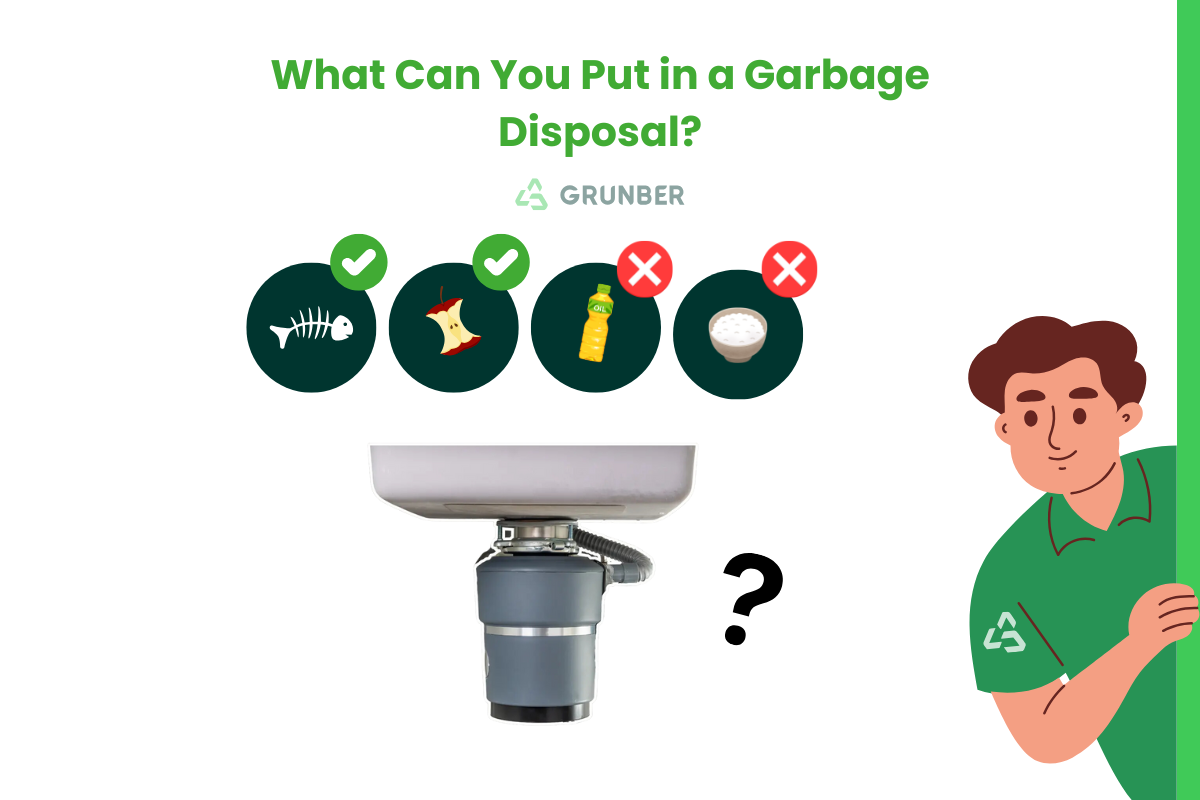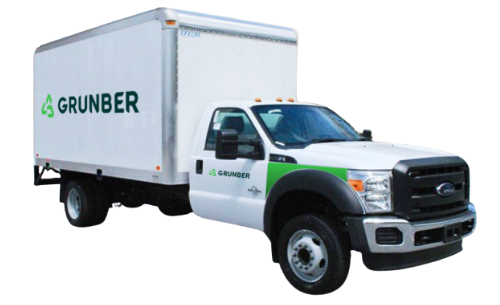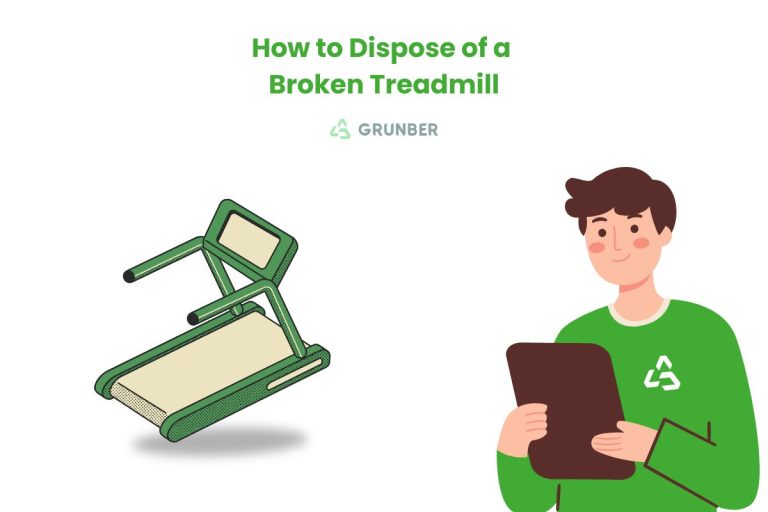If you’ve ever hesitated before scraping those dinner leftovers into your sink, you’re not alone.
In this article, we’ll cover the do’s and don’ts of disposal use, drawing insights from top industry sources and referencing our own What Can You Put in a Garbage Disposal? (previous post) for further reading.
Table of Contents
Why Garbage Disposal Care Matters
Garbage disposals are often seen as kitchen heroes—toss in scraps, flip a switch, and goodbye mess! But using them incorrectly can lead to clogs, foul odors, or even repairs. By knowing which foods are safe (and which aren’t), you’ll:
- Prevent plumbing nightmares
- Keep your kitchen smelling fresh
- Extend your disposal’s lifespan
Understanding How a Garbage Disposal Works
Contrary to popular belief, garbage disposals don’t use blades like a blender. Instead, they rely on impellers that spin and grind food scraps against a stationary grind ring. This breaks down waste into tiny pieces that can pass through your pipes. Because there are no razor-sharp blades, items like small bones are usually manageable—assuming your disposal has enough power.
Below is a quick reference chart to help you see at a glance what generally works in a garbage disposal and what should stay far, far away. Keep in mind that every disposal has its own quirks—if your unit isn’t particularly powerful, use extra caution and err on the side of tossing tricky scraps in the trash or compost bin. When in doubt, a little less in your disposal can save you a big headache later.
| Item | Safe? | Reason/Notes |
|---|---|---|
| Cooked Vegetables & Fruit Scraps | Yes (moderation) | Soft and break down easily. Avoid large batches at once to prevent jams. |
| Small Bones & Small Fruit Pits | Yes (caution) | Most disposals can handle small, softer bones and pits. However, large or very hard pits/bones may cause noise, wear, or damage. |
| Ice Cubes | Yes | Helps clean the grinding chamber. Run a few cubes occasionally to dislodge leftover particles. |
| Citrus Peels | Yes | Great for freshening odors. Cut peels into smaller pieces if your unit is low-horsepower. |
| Sauces, Soups, Broths | Yes | Liquids (without excessive grease) wash down easily. |
| Grease, Fats & Oils | No | Congeals and sticks to pipe walls, causing clogs. If a small amount slips in, use cold water to help solidify and chop it up. |
| Fibrous Veggies (Celery, Corn Husks, etc.) | No | The stringy fibers can wrap around impellers, jamming the disposal. |
| Starchy Foods (Pasta, Rice, Potatoes) | No (especially large amounts) | They expand with water, form a sticky paste, and can clog your pipes. |
| Shells & Large Bones | No | Hard shells/bones dull or jam the disposal and can damage plumbing. |
| Eggshells | No | Membranes cling to internal parts; ground shells can build up, leading to blockages. |
| Coffee Grounds | No | Grounds clump into a dense residue, contributing to drain blockages over time. |
| Non-Food Items | Absolutely Not | Metal, plastic, paper towels, etc. can damage the disposal or cause severe plumbing issues. |
Pro Tip: Always run cold water while grinding to keep fats solid (so they can be chopped up) and allow a few seconds of water flow afterward to flush everything through. If in doubt, throw it out (or compost it)!
What Can You Put in a Garbage Disposal?
Let’s tackle the core question: what’s actually safe to grind?
Soft Foods & Liquids
- Cooked Vegetables and Fruit Scraps: Thin peels, soft rinds, leftover pasta, or rice in very small amounts are usually fine.
- Sauces, Soups, and Broths: Liquids wash down easily and won’t clog your disposal, but watch out for fatty ingredients.
Small Bones & Fruit Pits
- Small, Soft Bones: Things like fish bones or chicken wing tips typically break down without major issues (if your disposal has moderate-to-high horsepower).
- Small Fruit Pits: Peach pits, avocado seeds, and larger, rock-hard pits can be tricky. However, many disposal manufacturers (such as InSinkErator) confirm that smaller pits are grindable—but large or extremely hard pits may cause extra noise or wear on older, less powerful disposals.
Ice Cubes & Citrus Peels
- Ice Cubes: A quick way to keep impellers clean and dislodge tiny food remnants.
- Citrus Peels: Orange, lemon, or lime peels can help reduce odor and give your sink a fresh scent. Just cut them into smaller chunks if your disposal is a lower-horsepower model.
What You Should Avoid Putting in Your Disposal
Even the best garbage disposal has limits. Here’s what to steer clear of:
Grease, Fats & Oils
- Bacon Grease & Cooking Oil: They can solidify in your pipes, causing blockages downstream. If a tiny amount goes in, run cold water to help it congeal and get chopped up, minimizing risk.
Fibrous Vegetables & Starchy Foods
- Celery, Corn Husks, Asparagus, Artichokes: These stringy or husky scraps often tangle in your disposal, jamming the mechanism.
- Potatoes, Rice, Pasta: Starches swell when mixed with water, forming a gluey paste that slows your disposal and clogs pipes.
Shells, Large Bones & Non-Food Items
- Shellfish, Eggshells, & Nut Shells: Hard shells can scrape or jam your disposal and take forever to break down.
- Big Bones: A beef rib bone might break down eventually, but it’ll rattle, clunk, and test your disposal’s durability (and your plumbing).
- Plastic, Paper Towels, or Metal Objects: Non-food items are a no-go. They can damage your impellers or cause major clogs.
Expert Opinions: Insights From Other Writers
To give you a well-rounded perspective, here’s what leading resources say:
- Consumer Reports
- Advises caution with tough, fibrous foods (like artichoke leaves or corn husks).
- Recommends running cold water grinding to flush out residual debris.
- American Home Shield
- Stresses that “if you wouldn’t feed it to a baby, it’s probably too tough for your disposal.”
- Highlights grease and starchy foods (pasta, rice) as main culprits behind clogs.
- Estes Services
- Encourages using ice cubes and citrus rinds for a “mini-cleaning” effect.
- Warns against fibrous veggies, coffee grounds, and eggshell membranes that can wrap around impellers.
Tips to Extend the Life of Your Disposal
- Use Cold Water: Always run cold water while the disposal is on and let it flow for a few seconds after turning the unit off.
- Don’t Overfill: Break down large loads into smaller batches; too many scraps at once can overwhelm the unit.
- Clean & Deodorize: Throw in ice cubes or freeze vinegar into ice cubes and grind them to remove stuck particles. Add citrus peels to neutralize odors.
- Schedule Professional Maintenance: If your disposal is making strange sounds, leaking, or jamming frequently, a plumber’s visit can save you from bigger headaches.
FAQ: Common Questions About Disposal Use
Q1: Can I put coffee grounds down the disposal?
Answer: It’s best to avoid them. Coffee grounds clump into a pasty sediment that can accumulate in your drain over time, leading to blockages.
Q2: Is it safe to grind eggshells?
Answer: Shell membranes can wrap around impellers or get stuck on the grinding ring. A little bit might slip through, but large amounts can cause trouble.
Q3: Do I need to clean my garbage disposal regularly?
Answer: Yes! Simple methods include grinding ice cubes, vinegar ice cubes, or citrus rinds. These help keep the interior fresh and free of buildup.
Q4: Why is cold water recommended over warm water?
Answer: Warm water can liquify fats and oils, allowing them to coat your pipes. Cold water solidifies them, so they can be chopped up and flushed out.
Q5: Can I put raw or cooked meat in my disposal?
Answer: A few scraps of cooked meat are generally okay. Large amounts or raw, sinewy cuts can clog or jam the unit. Dispose of large portions in the trash or compost instead.
Conclusion
Your garbage disposal is a kitchen MVP—but only if you treat it right. Knowing what you can put in a garbage disposal (and what you can’t) not only prevents clogs and foul odors but also saves you from pricey repairs down the line. Stick to soft foods, small bones (in moderation), and safe scraps like citrus peels or ice cubes. Steer clear of grease, starchy foods, and fibrous materials that can sabotage your unit’s performance.
When in doubt, check out our previous post for additional guidance, or consult professional resources like Consumer Reports, American Home Shield, and Estes Services for a second opinion. By following these best practices, you’ll keep your disposal humming happily—and your kitchen sink free of mess.
Need a Pick-Up for Bulk Junk or an Appliance Haul-Away? Grunber has you covered. Our team specializes in fast, eco-friendly removal services to simplify your cleanup. Reach out today to learn more!











